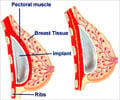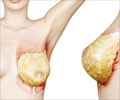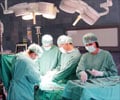Frequently Asked Questions
1. Which doctor do I consult if I wish to undergo breast augmentation?You have to consult a plastic surgeon with experience in breast reconstruction surgery.
2. Who is an ideal candidate for breast augmentation?
Women who have undergone breast removal (mastectomy) for cancer, breasts damaged by trauma or under-developed breasts.
In addition, older women with mild to moderate breast sagging may benefit.
Last but not the least, many women undergo breast augmentation to enhance the aesthetic appeal of their breasts.
3. Will I have unsightly scars following breast augmentation?
Generally, the incisions are performed in areas where they will not produce visible scarring.
The locations include inframammary (along the lower breast fold), peri-areolar, transaxillary (in the armpit), transumbilical (incision on the navel) and transabdominal (incision on the abdomen).
The choice of the incision depends on the requirements of the patient..
4. What can one realistically expect after augmentation?
A well performed surgery will improve the appearance of the breasts and their shape and increase the woman’s confidence and self-esteem. One cannot expect perfection.
The implants may not feel natural, and may be associated with pain or altered sensation.
Also their appearance will change over time with aging, pregnancy and breastfeeding.
Occasional complications may occur such as rupture of the implant, capsular contracture and collapse of saline implants. These will require revision surgery.
5. What is the average life of a breast implant?
Some implants last for as long as 25 years, while others require correction within 2 to 3 years. On an average, the life of a breast implant is 10 years.
6. Can I ask the surgeon to show before and after photos of breast augmentation?
Yes. They will have records of previous surgeries they have performed.
7. What are the risks associated with the surgery?
Breast augmentation carries the same risks as any other surgical procedure namely bleeding, hematoma formation, infection, and wound dehiscence
8. What are the long-term complications?
Complications may occur occasionally. These include implant rupture, capsular contracture, alteration in breast shape due to movement of the implant within the breast tissue and excessive scarring.
Saline implants may deflate over time.
9. What type of implant should I have?
The choice is between saline and silicone implants. You have to discuss the options with your surgeon.
In the US, only saline implants are being used. The silicone implants were banned by the Federal Drug Administration (FDA) in 1991 when doubts over their safety was raised.
Recently they have been reintroduced to be used under close FDA supervision in breast reconstruction surgery and revision surgery in women with silicone implants.
In the UK, both types of implants are available.
10. What are the possible pros and cons of using saline and silicone implants?
Saline implants are more likely to produce wrinkling, or deflate over time. It feels less natural compared to silicone gel implants.
However, if the implant shell ruptures and saline leaks, the saline would be absorbed and eliminated by the body naturally.
Silicone gel implants have a more natural feel, less likely to wrinkle and lasts longer. The softer gel implants may rupture, but this risk can be reduced by using implants filled with firmer gel, called Cohesive gel implants.
If the silicone implants ruptured, the leaked gel may induce an inflammatory reaction.
11. Where will my breast implants be placed?
The 2 possible locations are between the muscle and breast tissue or under the muscle (submuscular). You have to discuss the best option for you with your surgeon.
A submuscular location reduces the risk of capsular rupture and wrinkling. The area between the muscle and breast tissue is however the more natural location.
12. What can I do if the results do not turn out as realistically expected?
You may take up the issue with the surgeon who operated. In case you feel that there has been negligence, a complaint against the surgeon may be made to the certifying authorities.
13. When is a breast lift needed?
Generally a breast lift is necessary if there is sagging or ptosis of the breast. This procedure may be combined with augmentation or done as a stand-alone procedure.
14. What will my breasts look like if I decided to have my implants removed?
It depends on the elasticity of the skin and degree of sagging. In most cases the breast returns to the pre-implant state and shapes up well if the skin undergoes shrinkage.
If there is a pronounced droop, a breast lift may be necessary.
15. Is there an increased risk of cancer following breast augmentation?
No. However, some studies have showed that implants may delay the diagnosis of breast cancer (not implant related) in a breast with implants.
16. What is the cost of breast augmentation?
Costs may vary from hospital to hospital and country to country and also with the choice of procedure. You have to discuss with your surgeon.
17. Are there natural methods of breast enhancement?
Though some herbs and some nutritional supplements are marketed as natural breast size enhancers, there is no definitive proof of their beneficial effects.
Infact many of these foods contain estrogens and serious reactions may occur with other medications being used, such as warfarin.
Some of the natural agents are fenugreek, Saw palmetto, fennel seeds, yogurt, tofu, flaxseeds, soybeans, wild yam, ginseng and sesame seeds. Whole grains, fruits and vegetables may also help.












